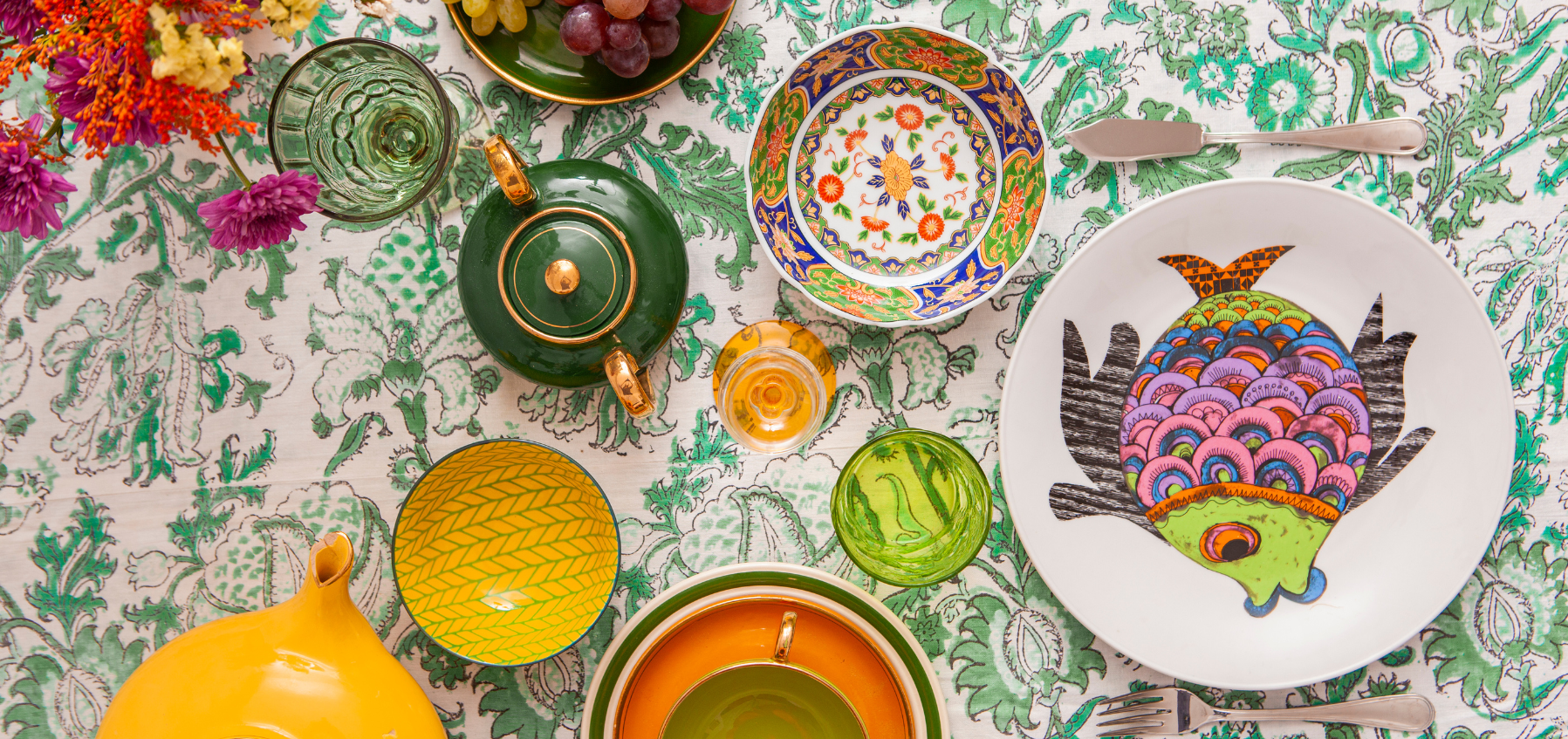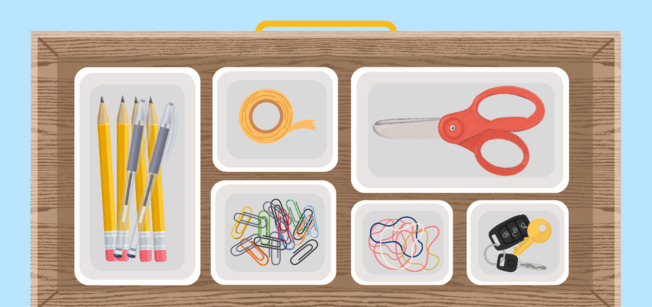
What is Maximalism? A History and Renter-Friendly Design Tips
Jan 11, 2024
Chances are, you’ve seen maximalist interior design while scrolling through your social media feeds — rooms that minimize negative space, invite excess decor in small spaces, and make a collection of seemingly random trinkets, patterns, and colors look good.
Displayed in the works of Wes Anderson, the Singaporean mansions of Crazy Rich Asians, and period pieces like The Great Gatsby, maximalist decor is that larger-than-life interior design style that makes aesthetic sense despite toeing the line of chaos. And after centuries of ebb and flow in American households — plus a cultural shift brought on by the pandemic — it’s back in style.
Maximalism’s Roots in America
Maximalist design dates to the late 19th century or the Gilded Age when America saw rapid economic growth, leading to an influx of lavish grandeur into new homes. Think: New York City’s most elite Upper East Side apartment buildings and Newport, RI’s mansions overlooking the Atlantic.
Following the Gilded Age (which overlapped with the English Victorian age), the French-born Art Deco movement arrived in the United States in 1925 and survived until 1939. Art Deco reflected the rise of the Machine Age and the high speeds of the time. It held on to the heavy gold leafing of the Gilded Age, but opted for geometric designs over ornate trompe l'oeil murals when it came to ceiling and wall elements.
Both during and after the Art Deco movement, maximalism’s cinema-born subgenre, Hollywood Regency, came into popularity. From the 1920s to the 1950s, movie sets displayed new and enticing home interiors that were created to look good on camera with over-the-top ensembles that were eye-catching, complemented set lighting, and, of course, elevated the drama. American consumers were enticed by the glam they saw on screen, and soon (before mid-century modern design took the nation by storm) households across the country were modeling their spaces after the elaborate set designs.
Maximalism persevered after the Hollywood Regency era and through the 1970s, the decade that remains one of the more predominant contemporary inspirations for maximalists. Home interiors of the 70s were distinctly joyful and funky, defined by a citrusy color palette, patterned wallpaper, and disco motifs — plus some of today’s prevailing favorites: quirky bells and whistles, houseplants, velvet, rattan, and statement lighting.
How We Arrived at a New Maximalism
In the mid-2010s, before the resurgence of maximalist subgenres, America decluttered. Organizer extraordinaires like Marie Kondo and influential “un-decorators” like Kim Kardashian made spring cleaning into a sudden minimalist movement. We left our reds, browns, Tuscan jarred vegetables, and country roosters in the 2000s, embarking on a relentless journey to include only items which, in the iconic words of Kondo, “sparked joy.”
Minimalism, according to Architectural Digest, doesn’t require turning away from color and intrigue, but its focus around cleanliness led to a fixation on neutral colors in that same decade. Thus, the infamous “millennial gray” aesthetic was born. Everyone from homeowners to landlords started slapping down synthetic gray flooring over natural hardwood and replacing tiled bathrooms with the Joanna Gaines–popularized shiplap. The materials made the place look clean, but for many, the whole thing felt too sterile.
In 2020, the cultural pendulum swung with force. The darkness of COVID-19 arrived and, along with it, new relevance for Kondo’s mantra (albeit within minimalism’s aesthetic opposite). The maximalist look was back: Instead of less being more, more was more. If you liked a statement piece, you bought it (probably online), and you found a place for it in your apartment or home.
The pandemic lockdown boredom of 2020 also contributed to the rise in popularity of TikTok, a platform that’s been instrumental in spreading interior design trends and teaching the layperson how to achieve them. Maximalist designers-turned-influencers like Dani Klaric and duo Josh and Matt share colorful DIY videos, advice for optimizing your maximalist spaces, and use their own homes to make the whole thing look utterly irresistible — but achievable.
Maximalist Home Decorating Tips for Renters
Of course, not everyone is in a living situation where they can re-paint their walls in Gilded Age–inspired jewel tones or professionally wallpaper their entire living space in retro patterns. Renters, however, can still find paths to their favorite flavor of maximalism without putting any dents in their security deposits.
In part, it’s simple: Find things that, of course, give you joy. But at the same time, you might consider narrowing down your favorite maximalist style before you start curating so that you can keep your apartment design loosely focused.
Rugs are your friend. Rugs are a classic renter-friendly home furnishing element that can pave the way to a maximalist apartment. Find rugs with rich colors and fun patterns and textiles that jive with your other curated or collected items. Runners make great accents for hallways, and even bathmats (a type of rug, right?) can add some flavor to your landlord-special bathroom. You can even try mixing and matching a few smaller rugs in a big space like your living room.
Peel and stick your way to aesthetic excess. Eclectic peel and stick wallpaper in bright colors is not only renter friendly, but it’s also one of the easiest ways to transform any room in your apartment into a maximalist dreamscape. You can peel and stick your kitchen backsplash, a bathroom wall, or the wall behind your bed. Just be careful not to bite off more than you can chew with your design choices; you’ll likely have to remove it all before you move out.
Get creative with your lighting. DIYers on TikTok have found creative ways to make renter-friendly statement lighting using baskets and plug-in pendant light fixture kits. Lighting can be a great opportunity to involve eclectic figures like flowers and mushrooms, and the right shapes can refract light in ways that add another layer of opulence to your design.
More really is more. One of the fundamental pillars of maximalism is sheer volume. Whether you’re going to the flea market, the thrift store, the local home decor boutique, or even sifting through old items in your storage unit, don’t be afraid to bring potential decor items home for fear of over-consuming or being a “pack rat” (but maybe leave the Tuscan jarred vegetables behind). If you don’t have much floor space, go vertical. Gallery walls are a staple of maximalist design, so curate your own collection of vintage picture frames, family mementos, and art pieces in bold colors to achieve your ideal look.
Today’s maximalism is a vast interior design style that’s flexible, customizable, and accessible to anyone who can collect things they love and assemble them in ways that complement their space.
Top metro areas
Atlanta Metro Apartments
1,471 apartments starting at $600/month
Austin Metro Apartments
1,404 apartments starting at $522/month
Baltimore Metro Apartments
738 apartments starting at $500/month
Boston Metro Apartments
5,064 apartments starting at $650/month
Charlotte Metro Apartments
918 apartments starting at $475/month
Chicago Metro Apartments
3,353 apartments starting at $400/month
Dallas Fort Worth Metro Apartments
2,746 apartments starting at $400/month
Houston Metro Apartments
1,070 apartments starting at $450/month
Las Vegas Metro Apartments
1,034 apartments starting at $670/month
Los Angeles Metro Apartments
4,783 apartments starting at $700/month
Miami Metro Apartments
571 apartments starting at $1,025/month
Milwaukee Metro Apartments
783 apartments starting at $500/month
New York Metro Apartments
2,104 apartments starting at $945/month
Orlando Metro Apartments
993 apartments starting at $550/month
Philadelphia Metro Apartments
1,758 apartments starting at $450/month
Phoenix Metro Apartments
1,544 apartments starting at $700/month
Pittsburgh Metro Apartments
1,077 apartments starting at $500/month
Portland Metro Apartments
1,741 apartments starting at $695/month
Raleigh Metro Apartments
807 apartments starting at $575/month
San Antonio Metro Apartments
1,032 apartments starting at $550/month
San Diego Metro Apartments
1,543 apartments starting at $590/month
San Francisco Metro Apartments
1,715 apartments starting at $850/month
Seattle Metro Apartments
1,526 apartments starting at $525/month
Tampa Metro Apartments
1,034 apartments starting at $725/month
Washington Metro Apartments
709 apartments starting at $550/month


